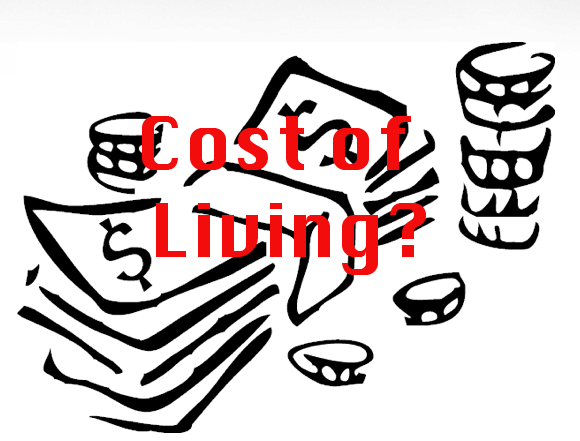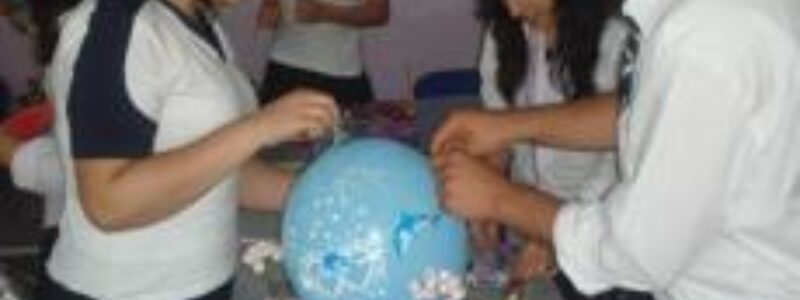Connecting Math to Our Lives

Project Name: Connecting Math to Our Lives
Age Level:
12-14 (Middle)
Subject Areas:
Mathematics
Summary: Students compare cost of living in different countries. (COMMON CORE STATE STANDARDS ALIGNED)
Connecting Math to Our Daily Lives
Content Area: Math
Grade/Age Level(s): 7th/12-13
Teacher goals:
I want students to become adept at using rates, proportions, and percents as tools of analysis in a meaningful global context.
Student goals:
- Students will 1) Solve single and multi-step problems involving proportional relationships and verify the solutions, 2) Determine unit rates in proportional relationships, 3) Solve single and multi-step problems involving conversions within or between measurement systems and verify the solutions, 4) Identify relevant information related to the solution to a problem, 5) Represent a problem situation, describe the process used to solve the problem, and verify the reasonableness of the solutions and 6)Extract and organize mathematical information from raw data to make inferences, draw conclusions, and justify reasoning.
- Students will learn about the similarities and differences in the cost of living as defined by them for at least two countries.
- Students will learn how to gather and exchange data and how to determine which parts are relevant to their specific question/variable. They will apply what they have learned about rates, proportions, percents, and conversions to the cost of living analysis.
Common Core State Standards that this project addresses
Math
- 7.RP.1: Ratios & Proportional Reasoning- Compute unit rates associated with ratios of fractions, including ratios of lengths, areas and other quantities measured in like or different units.
- 7.RP.2: Ratios & Proportional Reasoning- Recognize and represent proportional relationships between quantities.
- 7.RP.3: Ratios & Proportional Reasoning- Use proportional relationships to solve multistep ratio and percent problems.
- 7.SP.1: Statistics & Probability- Understand that statistics can be used to gain information about a population by examining a sample of the population; generalizations about a population from a sample are valid only if the sample is representative of that population. Understand that random sampling tends to produce representative samples and support valid inferences.
ELA
- W.7.2 Write informative/explanatory texts to examine a topic and convey/ideas, concepts, and information through the selection, organization and analysis of relevant content.
- W 7.4 Produce clear and coherent writing in which the development, organization, and style are appropriate to task, purpose, and audience.
- W 7.7 Conduct Short research projects to answer a question, drawing on several sources and generating additional related, focused questions for research and investigation
- SL 7.1 Engage effectively in a range of collaborative discussions with diverse partners on Grade 7 topics, texts, and issues, building on others’ ideas and expressing their own clearly.
Timetable
- The unit on Proportional Reasoning lasts approximately six weeks. I would want students to begin exchanging ideas on the definition of cost-of-living, consumer price index, and salary with other participants. They should have a list of desired data ready by the end of the first week. They would need to keep careful track of family expenditures for week 2 and 3. In week 4, we will organize all data as a class and ready it for exchange. By the end of week 6, the analysis should be complete and a presentation should be made.
- In week 1, students should be involved three times per week, checking e-mail correspondence. In weeks 2 and 3, students should be recording daily. Week 4 will require 1 to 2 class periods. Week 5 the same. Week 6, probably two days to get through the presentations.
Specific lessons
Introduction
- How will you present this project to your students? We will do a brainstorming activity to establish definitions. In this way, I will get to see what students think the terms mean and to see what they think will go into a market basket. We will compare their ideas with the published version and finalize a list to share with exchange partners. Once we get their list, we will do a cyber “think-pair-share” and come up with a final list for our market basket.
- How will you tie it into their curricular studies? We will talk about rates when we discuss currency and prices. We will discuss proportions when we compare rates. We will discuss percents when we see how much of the budget is devoted to various items.
- How will you get them interested in the topic? The hook will be to let the students create their own market basket with their exchange partners. Instead of using the established CPI from the Bureau of Labor Statistics, USA, they will decide what is important to compare.
- What background knowledge do your students bring to the project? Students will have the mathematical foundation from 6th-grade to handle rates, proportions, and percents. Also, the students at my school are quite diverse and will have lots of ideas for what should go into the market basket.
Productivity of work
- Will your students need to do research for their project? Students will need to gather data.
- How will they be organized to gather information? Students will be organized in pairs.
- Who will be responsible and in charge? Students will sign a Buddy Contract and will individually be responsible for gathering the data but collectively be responsible for exchanging it.
- How will you handle the project exchanges, how often, and who will be in charge? During the introduction we will likely have to communicate 3 times. I will use class time for it. Once the parameters have been collaboratively established, I don’t think we will have class time for communication until the end of week 4. At this time students will be organizing their data and preparing it for exchange. We may have to check the forums daily until we get the parameters of organization and exchange worked out. During the analysis, there may or may not be time for communication. If students want to consult their international partners for help, I suppose they could. We’ll have to wait and see. Finally, during presentations, if possible, I would like to arrange time for students to exchange videos of their presentations and hopefully receive video of their international partners’ presentations to compare problem-solving techniques.
Assessment of student work
- How will you assess the student work in the introduction stage of the project? This will be a formative assessment such as an exit ticket to verify students have a common working definition for market basket, cost of living, and salary.
- How will you assess the student work in the implementation of the project? During the data gathering phase, I will check in daily to be sure students have recorded their families’ expenditures for the past day. Each day they forget hurts their data and consequently will result in a grade reduction. During the organization/preparation for exchange, students will be assessed through the notes they have in their journals and their products ready for exchange.
- How will you assess the student work in conclusion of the project? I am thinking of using a modified version of the collaboration rubric found on rubistar as one measure of students’ success. For communication, one of the rubrics on presentations will be employed. I am not yet sure which as I do not know which media form the presentation will take. For the analysis (critical thinking) portion I will be looking for correctness and completion in the mathematics.
Conclusion of activity
- When does your participation in the project end? I will launch the project and get students started with the discussion. It will be up to them to do the work. I will monitor their progress of course, but will try not to interject my ideas.
- How will the students draw their projects to a conclusion? Once students receive their data back from their exchange partners they will have one week to analyze it and to prepare their presentations.
Possible Skills
- Computer skills: E-mailing, creating and posting videos, using excel to create organized representations of the data
- Research skills: Daily data collection
- English language skills: Write up of findings
- Critique skills: interpretation of the data and evaluation of the analyses of their peers






